One year of the Braze Data Platform: Elevating user experiences and cross-team collaboration
Published on July 15, 2025/Last edited on July 15, 2025/9 min read
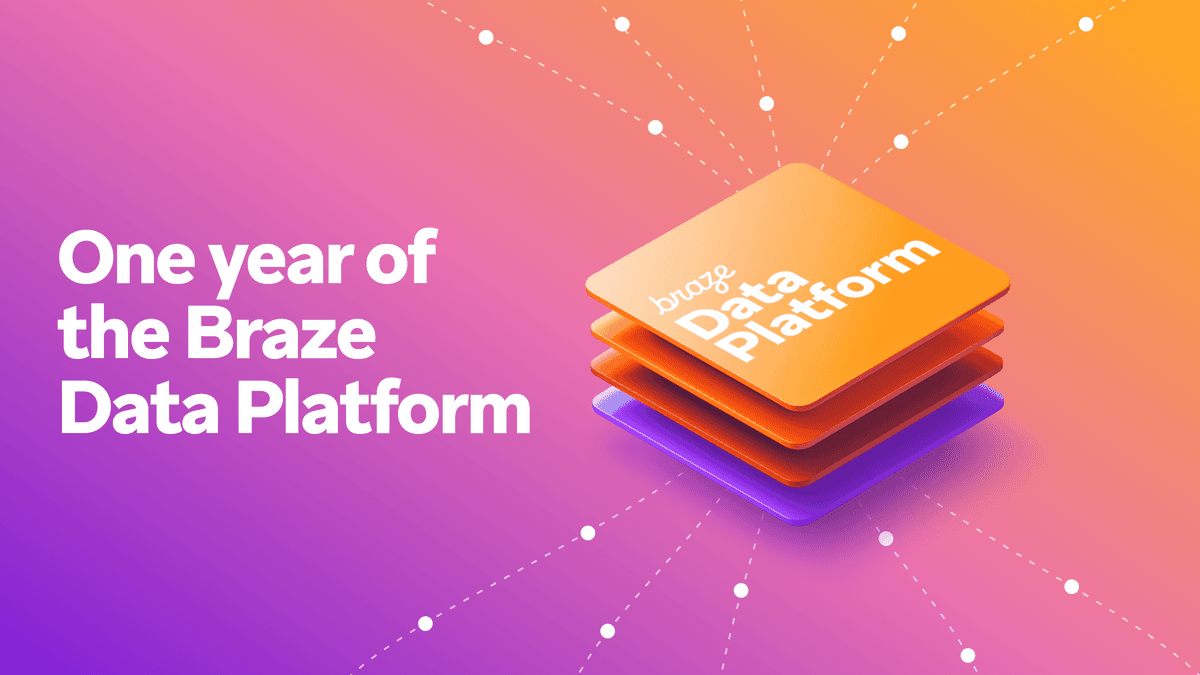

Sahiz Kaur
Senior Product Marketing Manager, BrazeThis week, Braze celebrated a significant milestone: The one-year anniversary of the Braze Data Platform. Data is the backbone of successful customer engagement, and as artificial intelligence (AI) continues to permeate all aspects of our lives, data has become more important than ever. With the right approach (and the right technology), brands can make their customers feel seen and understood, building loyalty and long-term relationships.
At Braze, we've prioritized building products, partnerships, and integrations across the data ecosystem, so that brands can easily bring their proprietary data to Braze—from data warehouses, customer data platforms (CDPs), analytics tools, and back-end systems. Our goal: To make it faster and easier for brands to unify, activate, and distribute their data to deliver world-class customer engagement.
This vision has guided our work for many years, and is precisely what led to the introduction of the Braze Data Platform. At its core, the platform is a comprehensive, composable set of data capabilities and partner integrations that empower marketers to leverage the power of their data to deliver impactful, scalable customer experiences via Braze.
A year in review
Everything we do at Braze is driven by our customers’ needs, and our focus on helping them solve their biggest challenges. To this end, we have made deep investments in product features and partnerships that enhance all elements of brands’ data and marketing journey. Let’s take a look at our innovation across the three pillars of the Braze Data Platform: Data Unification, Data Activation and Data Distribution.
Data Unification
We expanded the out-of-the-box sources for Cloud Data Ingestion (CDI) to now include Microsoft Fabric, Google Cloud Storage, and AWS S3 in addition to Snowflake, Databricks, Google BigQuery, and AWS Redshift. Brands can directly connect, sync, and delete user data (such as user attributes, events, purchases) and Catalog data with just a few clicks. Additionally, brands using CDI can now easily build and activate zero-copy segments directly from their warehouse data. With the addition of new sources and increased flexibility to CDI, we saw a 62% year-over-year increase in adoption.
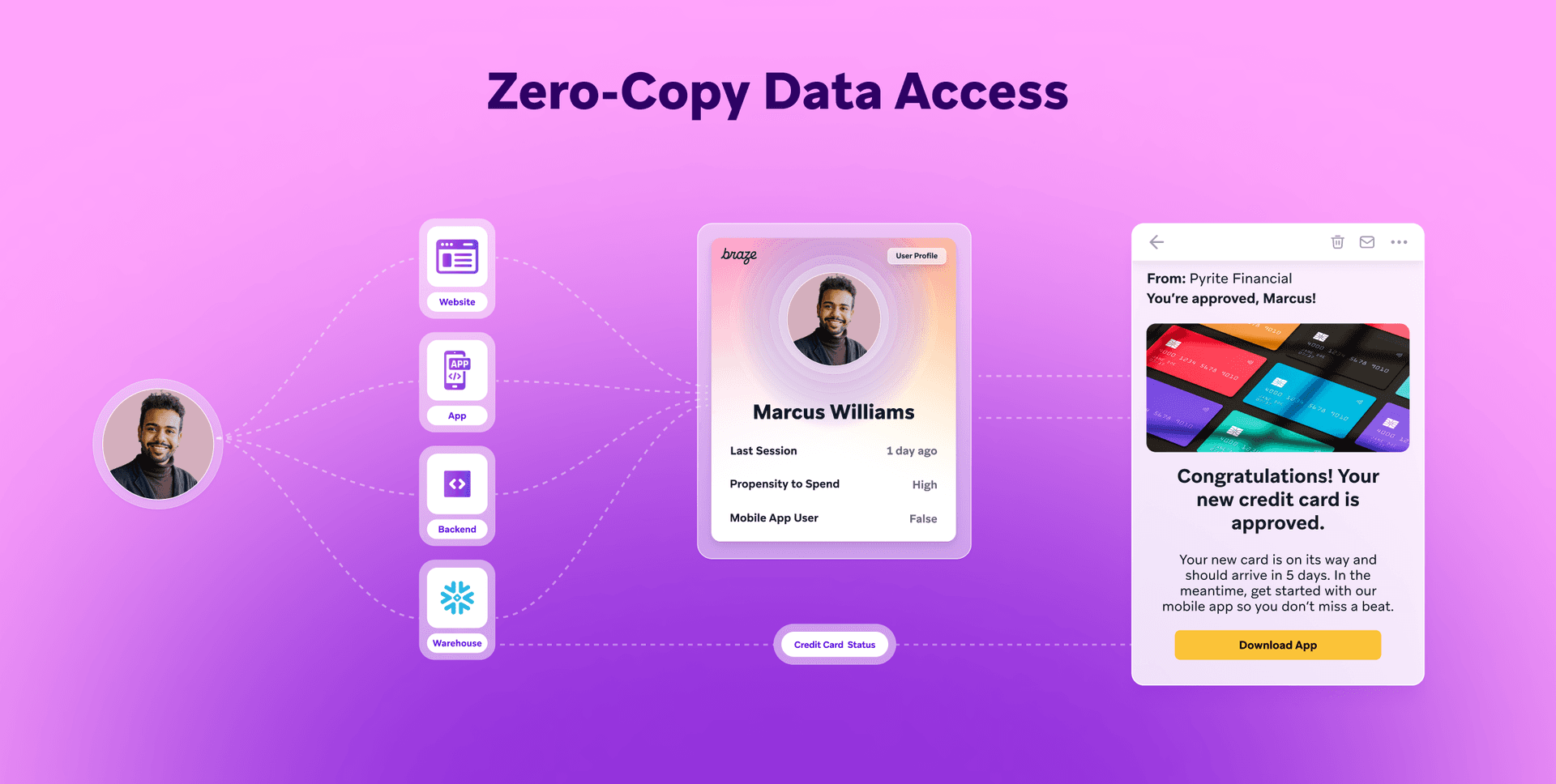
In addition to direct connections with data warehouses and cloud storage, many brands bring data from external sources into Braze. Using Data Transformation, companies can easily build and manage webhook integrations with external systems, automating data flows to power sophisticated marketing use cases. Last year, we introduced pre-built templates for common external platforms, such as Zendesk, Stripe, Typeform, and more. This has allowed marketers to get started with less technical support, resulting in a 50% increase in Data Transformation usage on Braze in the last year.
Data Activation
With the ongoing proliferation of channels, devices, and platforms, customers often engage with brands in multiple places, which can result in the creation of duplicate user records. In early April, Braze introduced Automated Identity Resolution to help marketers easily identify and merge profiles to maintain a single, unified representation of their end users.
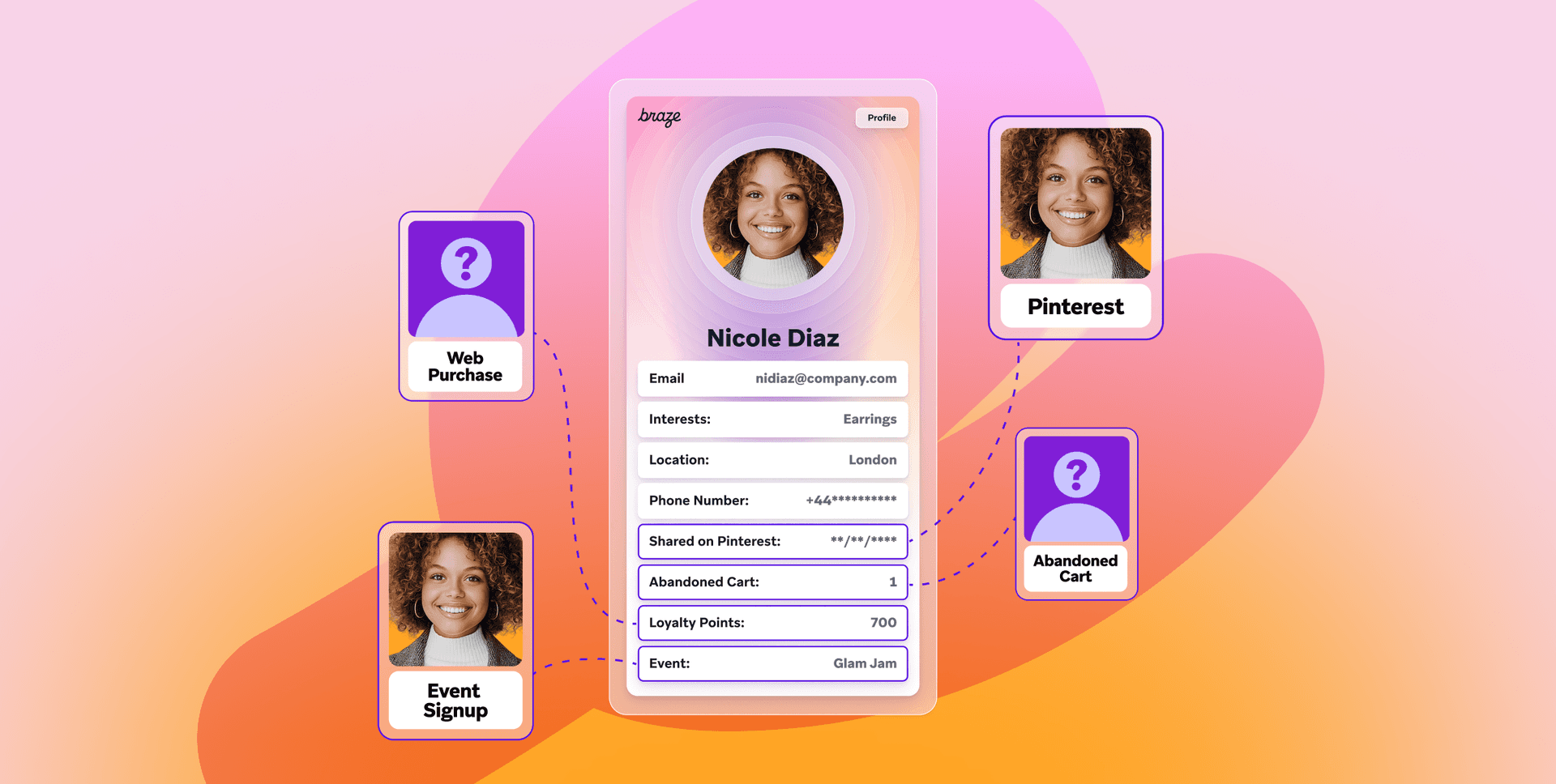
Beyond the user profile, marketing teams often need access to non-customer data in their campaigns, such as information about products, features, offers, promotions, and more. Now brands can easily upload any data using CSV imports and save it on Braze Catalogs for use in their campaigns. For example, a marketer at a media and entertainment company can import information about the movies and shows hosted by that streaming service, then recommend content to users based on their favorited titles and most-watched genres. And this approach is catching on—our data shows that Catalog usage has increased by nearly 80% since we introduced the Braze Data Platform.
Marketing teams want autonomy in using data for customer engagement. Over the last year, the Braze Data Platform has introduced features to allow marketers to more independently manage their data in Braze. What does that look like? Brands can now add descriptions and tags within Braze to support data sorting, and it’s also easier to clean data by blocklisting attributes and events, or deleting data that is no longer needed. The result? More control over their data and better customer experiences.
Data Distribution
As brands execute campaigns and connect with their customers, a wealth of new data is produced. With Braze, brands not only can leverage real-time data for dynamic personalization but also stream this data to external systems and tools to empower and inform business units beyond Marketing, enriching their overarching business strategy.
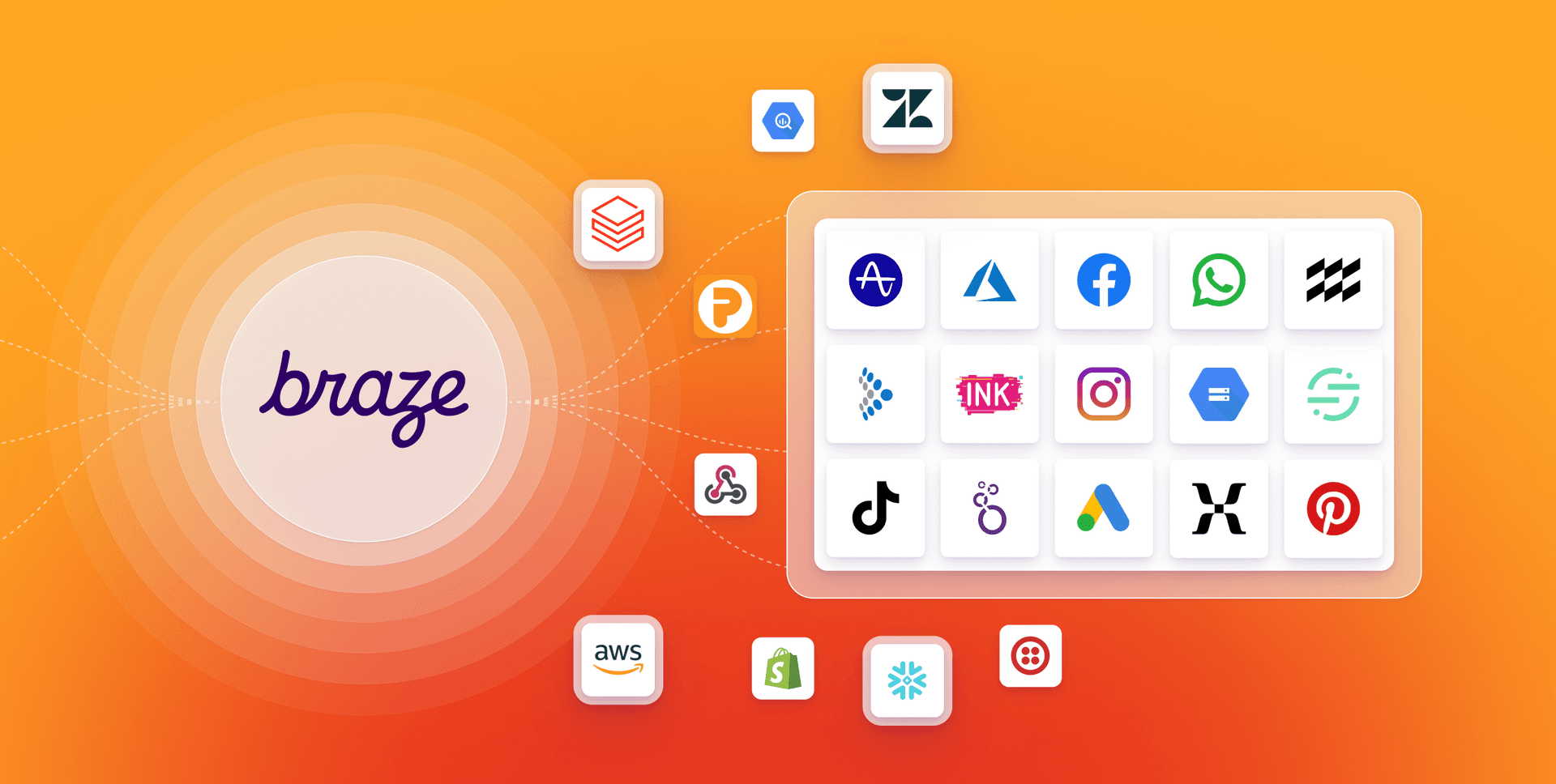
Since we introduced our new Report Builder and Dashboard Builder capabilities this spring, we’ve witnessed a significant uptick in customers utilizing analytics features to transform their engagement data into actionable insights. With over 17,000 custom reports run and 1,600 custom dashboards created since launch, marketers are gaining the insights they need to optimize engagement strategies and prove campaign impact in real time.
But we didn’t stop there. With Currents and Snowflake Data Sharing, brands can securely distribute their product, engagement, and customer data to destinations outside of Braze, ensuring that other parts of their organization can also benefit from this valuable customer engagement data. Last year, we streamed over 11 trillion events across multiple destinations using Currents. To further this effort, and extend the utility of data collected via Braze, we expanded our Currents Connector library to include the Adobe Real-Time Customer Data Platform, strengthening our partner ecosystem and providing brands with seamless solutions to ensure their data is accessible wherever it’s needed.
What’s new in the Braze Data Platform
It was a big, exciting year for the Braze Data Platform, and we have even more innovation on the horizon. As we look ahead, we are focused on two key areas: Empowering Marketing teams to be more autonomous, while simultaneously giving marketers and their technical counterparts the tools required to work as efficiently as possible.
Elevating user experiences while reducing reliance on technical teams
The Braze Data Platform is designed to simplify the marketers’ journey, enabling them to manage their customer engagement strategies with ease and efficiency. That can enhance their product experiences while reducing reliance on technical teams, making it easier for marketers to focus on creating memorable moments with their end customers.
- New eCommerce Calculated Fields (EA Q2 FY26): Earlier this year, we launched a strategic partnership and enhanced integration with Shopify, making it easier for enterprise eCommerce marketers to align with evolving shopper preferences by leveraging real-time data and insights. Building on this foundation, we’re thrilled to introduce eCommerce Calculated User Fields. These fields allow eCommerce brands to effortlessly track customer lifetime value and build relevant experiences for each user. For example, a fashion retailer can quickly identify their top spenders using pre-defined fields like “Total Revenue,” “Total Refunds,” and “Total Orders.” The brand can then use these segments to send highly targeted campaigns to these customers—such as an email offering a 20% discount on new arrivals—while easily tracking the monetary impact associated with the initiatives.
- Self-Serve Profile Deletion (EA Q2 FY26): Many brands now operate across multiple geographies, facing diverse data privacy regulations like GDPR in the European Union, or CCPA in California. Imagine a customer from one of these regions reaches out to request that their data be deleted; rather than navigating extra steps or involving additional teams, marketers can now quickly and efficiently locate and delete that user's profile directly within Braze. With Self-Serve Profile Deletion, brands can reduce risk, demonstrate their commitment to data privacy, and enable marketers to maintain and manage their customer data with autonomy that would otherwise require manual intervention from technical teams.
- CSV Imports for Custom Events (GA Q2 FY26): Uploading customer data via CSV has been a quick and reliable method for creating and updating user profiles in Braze for some time. We're excited to extend this capability with the ability to upload custom events alongside user attributes. Imagine a retail brand hosting a styling workshop and collecting valuable first-party data, such as event attendance, interactions with specific vendors, or post-event feedback. Brands can seamlessly bring this data into Braze, connecting real-world engagement to their Braze campaigns, without requiring engineering support.
Bolstering data integrity while streamlining operations between Marketing, Product and Engineering
From top to bottom, the Braze Data Platform has been developed to address our customers’ most pressing technical challenges. We are committed to reducing operational overhead, improving data quality, and fostering a more autonomous environment for marketers using Braze. By providing marketers with self-service capabilities and giving technical teams more robust tools for proactive monitoring and validation, we're not only improving our platform, but working to enhance our customers’ ability to deliver high-impact, strategic work that truly moves the needle for their business.
- Proactive API monitoring with Usage Alerts (GA Q2 FY26): Earlier this year, we launched our API Usage Dashboard, allowing technical teams to easily monitor and visualize their API traffic in Braze. Going a step further, brands can now set alerts to be notified when API requests reach near their rate limit, or if error rates spike above a certain threshold. These real-time notifications empower technical teams to more easily investigate issues like malformed requests, adjust traffic routing as needed, and support a more seamless flow of data for campaign delivery and overall team efficiency.
- Bulk Data Updates for Recommended Events (EA Q2 FY26): We’re excited to introduce streamlined workflows for handling Back-in-Stock and Price Drop notifications via Bulk Data Updates. This feature enables brands to process thousands of updates simultaneously, ensuring that end customers receive accurate and timely information on product availability and pricing. By automating these updates, technical teams can not only minimize the risk of errors, but reduce workloads associated with supporting these sorts of triggered campaigns.
- Enhanced Data Exports (GA Q2 FY26): Currents exports now include more detailed data from Braze engagement channels, including new channels like Braze Banners. This upgrade makes it easy to seamlessly integrate comprehensive customer engagement data—such as Banner clicks, impressions, webhook failures, suspected bot activity and more—into external destinations like CDPs, business intelligence (BI) and analytics tools, or customer service platforms. Further, the introduction of Currents Test Sends, allows engineers to quickly verify data accuracy and troubleshoot exports directly from the Braze dashboard, contributing to improved data integrity and quality.
Final thoughts
It’s been an exciting year for the Braze Data Platform, but we’re not resting on our laurels. We are continuing to invest in new features and functionality within the platform, with an eye toward empowering marketers while making cross-functional collaboration and seamless as possible as brands deliver innovative and impactful customer engagement experiences.
Want to dig deeper into the Braze Data Platform and how it can support your brand? Check out our recent What’s New webinar for all the key details, or reach out directly for more information!
Related Tags
Be Absolutely Engaging.™
Sign up for regular updates from Braze.
Related Content
View the Blog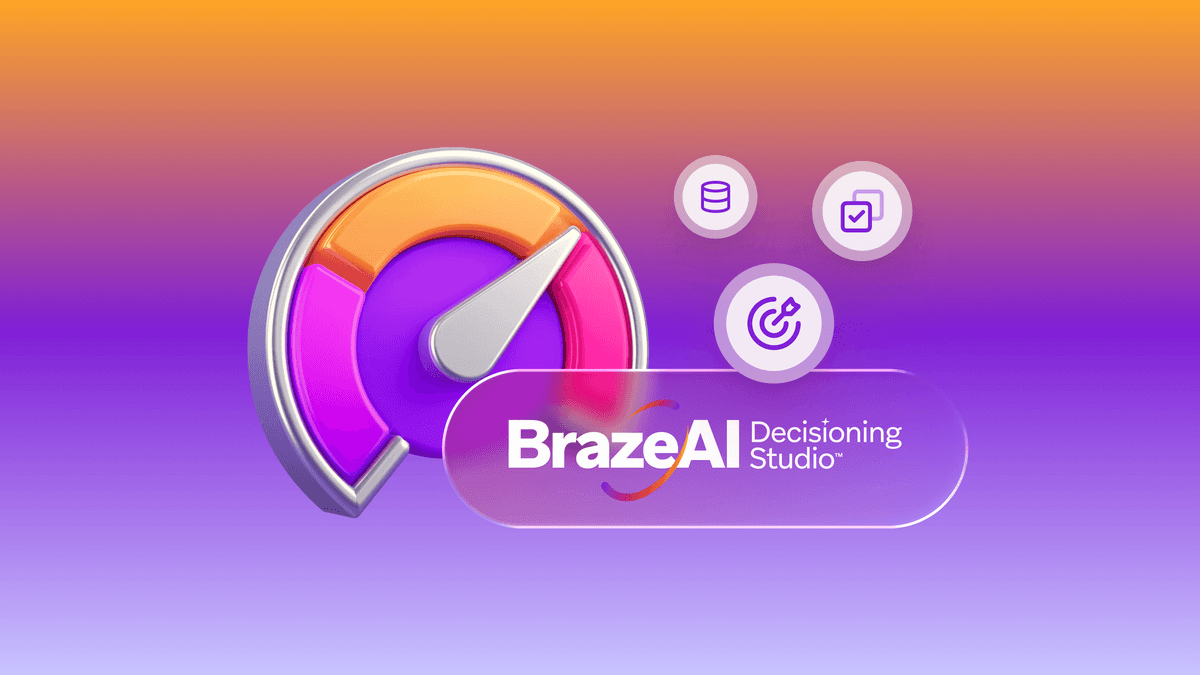
AI decisioning cheat sheet: How to crawl/walk/run with BrazeAI Decisioning Studioᵀᴹ

Team Braze

A day in the life of a data scientist on the BrazeAIᵀᴹ forward-deployed engineering team

McKay Jensen
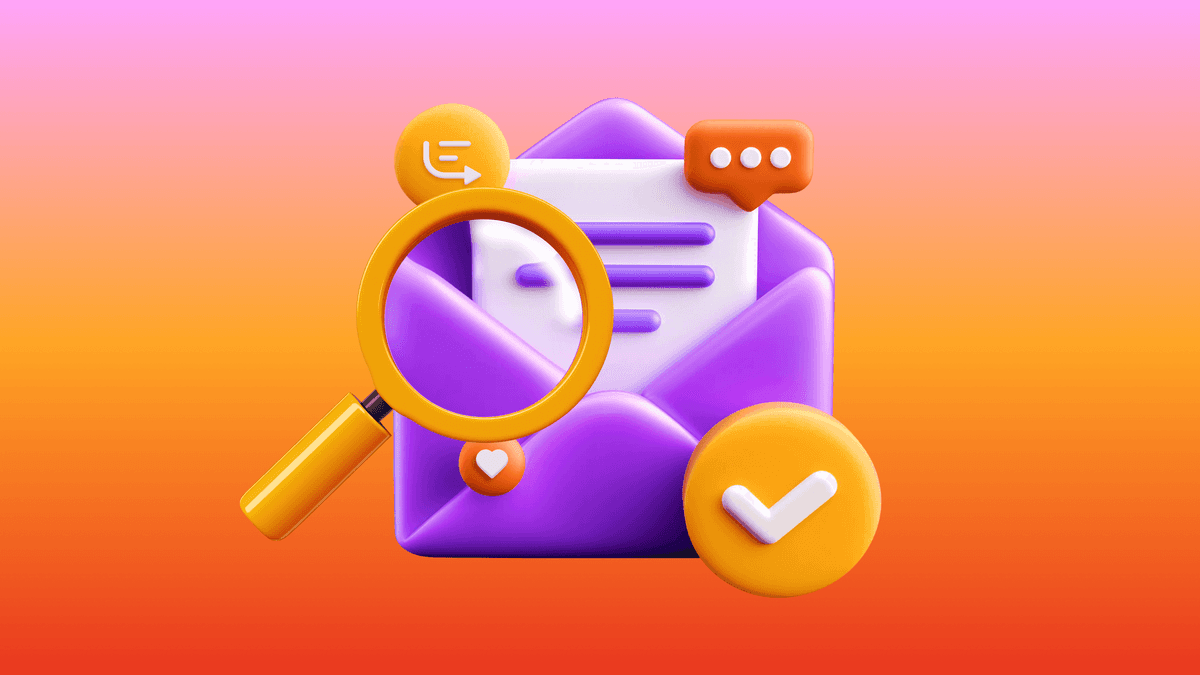
The new inbox reality: How iOS changes are reshaping email marketing
